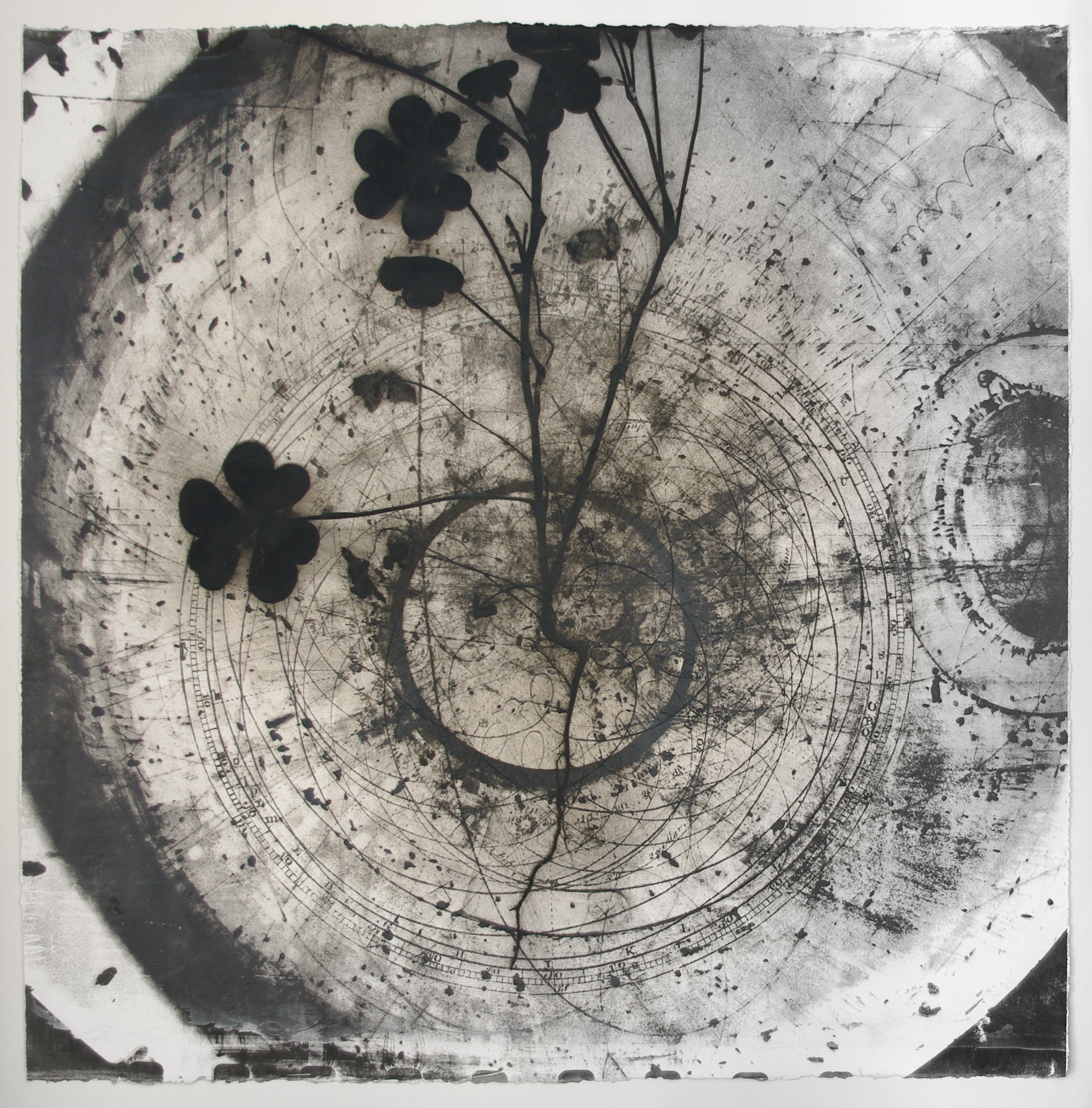Nature’s Persistent Instrument

Nature’s Persistent Instrument is an exhibition of works by ASU alumna Stephanie Hunder, and ASU professors Heather Green and Mary Hood. Each artist addresses environmental issues in profound and personal ways.
Collected objects and images find their way into Hunder’s images via scanning or camera photography, screenprinting and various contemporary or antique photo processes. Layered and combined, they create subjective, illusory narratives. Hunder writes, “I appreciate photography’s ability to capture the objective facts of the real world, facts that often mirror my inner musings. Scientific drawings and diagrams are similar, showing through their execution how the mind works – trying to understand. “ Her mixed media works combine scientific elements with images of plants in graceful metaphors.
Mary Hood writes about her work, “The world we live in often feels shaped by catastrophic events, both internal and external, and a sense of looming crisis seems to provide the structure of feeling for our time. This work investigates utopian and dystopian constructions; exploring the boundaries between the idealized and abstracted spaces of an immaterial world.” In her works Hood depicts animals in crisis and as guardians of humanity.
Transect is an installation of elegantly simple photographic scrolls, clock bezels, video and sound. Heather Green created these works after assisting biologist Katrina Mangin with field research along the rocky intertidal in La Cholla, Mexico. Through her art Green transforms the data of Mangin’s discovery, tracking the growth of an invasive species of hydroid along the water’s edge. Each element in Transect represents a sampling process used by Mangin in her research.
As the viewer enters the space she may hear the sound of waves and the repetitive naming of ‘rock,’ ‘barnacle’ or ‘clearing’ that represents the presence or absence of the invasive hydroid along a transect. The voice is soft against the waves. Its repetition becomes an invocation as the viewer watches the maps that show the location of the small intruder fade one into the next depicting 25 years of careful observation. Three scrolls hold 50-meter photographs of the shoreline and can be slowly turned to reveal seasonal changes. The last element, clock bezels, cast delicate shadows on the wall as Green etched them with observations from Mangin’s field journals. Green creates an atmosphere of science and ritual where Mangin’s searching out of this tiny invader becomes a metaphor as the viewer might search for answers to environmental crisis in the elusive shadows on the wall.